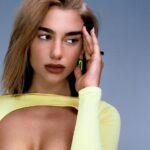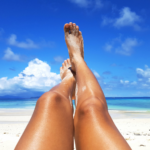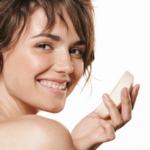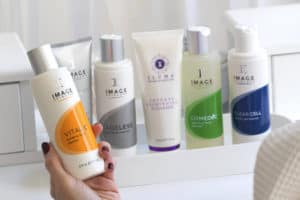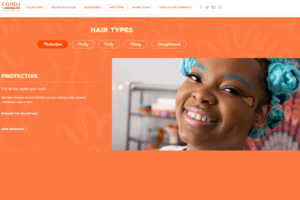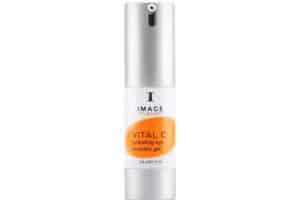This post is about moisturizers and will probably be the most important article that you will read about skincare. A lot of you are already pretty good at moisturizing, but you probably didn’t know how important it really is or which moisturizer is best.
The best face moisturizer for dry, sensitive skin, or oily skin is:
- Dry, Sensitive Skin: CeraVe Moisturizing Lotion – Click here to see it on Amazon – Our #1 Top Pick!
- Oily Skin: Ole Henriksen Balancing Moisturizer – Click here to see it on Amazon
You might think that moisturizing is about anti-aging or keeping oily skin, not so oily and dry skin hydrated, but there is more to it than that. When you moisturize your skin, you’re actually protecting it from harmful environmental factors.
First, we’re going to look into what moisturizers are and what they do to your skin. We will then discuss its necessity and cover the different types of moisturizers, including which one will suit your skin type.
We will also teach you when to know if it’s time to switch moisturizers, and of course, stay tuned for the end, where I’ll give you our recommendations and tips so you can pick the best moisturizer for you.
Also, for an excellent moisturizing lotion for dry and sensitive skin, take a look at our top pick, the CeraVe Moisturizing Lotion:
Click here to see it on Amazon.
What Are Moisturizers?
So what are moisturizers? Moisturizers are creams or lotions that are designed to help hydrate and retain moisture in the skin. They typically contain beneficial ingredients such as essential oils, herbal extracts, and chemicals to control oil and reduce irritation.
There are three different types of moisturizers which are occlusives, emollients, and humectants. Occlusives help trap the moisture that’s already in your skin and prevent them from evaporating.
Emollients refer to products that soften, protect, moisturize, and lubricate the skin, just like a hair conditioner, but for your skin.
Humectants are moisturizers that help encourage young cells to emerge to the surface of the skin and reduce any flakiness and dryness. Moisturizers with emollients and humectants help keep the skin moisturized as well as keep it soft, supple, and glowing.
Normally, our body can perform all these functions naturally, but moisturizers add an external factor to help our skin stay soft and supple like a baby’s.
History of Moisturizers
Moisturizers have been around for about ten thousand years, and a lot of interesting recipes have been created to try and moisturize the skin.
Early indications show that some people actually smeared animal fat into their skin to retain moisture, keep the skin supple, and provide warmth in the harsh environment and weather.
In ancient China, a well-known concubine mixed egg white with powdered vermilion, which is a very toxic, bright red pigment laced with mercury. She believed it kept her youthful.
The Ancient Romans, on the other hand, mashed bread, milk, and honey and then laced the mixture on their faces.
During the Anglo-Saxon period in England, moisturizers were also made for the hands aside from the face. A lot of them were made from leftover lard as well as old wine. They put essences of lilies to brighten them up a little bit and make them smell better.
Moisturizing Is Very Important
Now let’s talk science. How important is moisturizing? On the outermost surface of our skin lies the stratum corneum, which is a barrier that separates our body from the outside world.
This surface layer is naturally kept moistened by our body’s fats such as fatty acids, ceramides, cholesterol, and corneocytes.
Corneocytes are like the bricks of the wall barrier, while natural oils and fats are like the cement holding the wall together. Every day, our skin goes through a process called transepidermal water loss, also known as TEWL.
When our blood vessels deliver moisture to the dermis layer of the skin, the water travels upward through the epidermis and eventually evaporates.
Then, as the moisture level in the air goes down, the fatty protein links of the corneum start to break apart and leave fractures between the groups of corneocytes.
When you apply moisturizer, that barrier is able to trap and replenish moisture in your skin and stop it from evaporating into the air.
When you don’t moisturize or if you didn’t moisturize enough, the skin’s barrier actually crumbles down even further, which then allows your skin’s moisture to evaporate.
The loss of moisture leaves your skin dehydrated. Most of you think that you have combination skin. It’s not that you’re dry and oily at the same time; it’s your skin lacking moisture because you’re not holding in and restoring and retaining all the moisture that should be in there.
How to Use a Moisturizer
Next, let’s talk about how to properly use moisturizers to get the best benefit and full potential from them. After cleansing and toning, and application of serums, you use a pea-sized amount of moisturizer and dot it onto your face.
Then starting with the cheeks, which are the driest area on your face, you do slight gentle upward strokes to avoid creating wrinkles or prevent sagging. You have to make sure the moisturizers are massaged into it very well.
The skin around this area is very thin and delicate and is the first area that gets dry because if you think about it, your cheeks are protruding, which is why they get easily hit by the sun.
When you’re done with the cheeks, move on to your forehead, your nose, your jaw, and then down to the neck. Make sure your skin absorbs all the moisturizer by patting it onto your skin.
Types of Moisturizers
Now let’s move on to the different types of moisturizers. Moisturizers come in four different types. These are gels, lotions, creams, and ointments. Gels have the thinnest consistency and are great for oily, combination, and also sensitive skin.
They are lightweight and sink the quickest into the skin. They do not leave a greasy film over your face, which makes them great for oily skin.
Lotions are thicker in texture than gels, but they’re still very lightweight. This is because the majority of the ingredients in lotions are water. They also contain moisturizing ingredients such as emollients or humectants, which help moisturizers go deeper down into the skin.
Creams can have different consistencies and can be used interchangeably with lotions.
If you want to try out the actual consistency, you can put some on your hand and notice that they stay on top of the skin longer than gels and lotions. Ointments are the thickest type of moisturizer you can get and is best for those who want to keep their skin hydrated.
They are considered an occlusive moisturizer because they trap moisture into the skin. Ointments cut deep TEWL by 98%.
To see if things really work or not, we tried using a moisturizer on one side of the face like we normally would and skipped moisturizer on the other side. At the end of the experiment, we measured the hydration levels of the skin.
We used “Some By Mi” AHA-BHA-PHA Miracle Cream, which also has Centella, which is good for calming and inflammation, especially if you are acne-prone.
Click here to see it on Amazon.
It has a lightweight gel consistency and makes your skin glow, feel bouncy, and subtle.
Then, we got a little instrument called the moisture monitor off Amazon, which measures the moisture level on your skin. So, upon application, we tested the moisturized side of the skin, and it read 52.6% hydration on the cheek area while the other side read 38% hydration.
Click here to see it on Amazon.
For the forehead area, the moisturized part read 56.7% hydration and 35.5% hydration on the bare side. So overall, the bare area has around 35% hydration, and the moisturized area has around 50% hydration.
After a few hours, we again tested the moisture level on the face to see if the unmoisturized area caught up with the moisturized area. For the chin, we got 38.2% hydration on the moisturized area against 28.6% hydration on the bare area.
For the forehead, we got 40.6% hydration on the moisturized area against 23.8% hydration on the bare area.
It has a lightweight gel consistency and makes your skin glow, feel bouncy, and subtle. Then, we got a little instrument called moisture monitor off Amazon that measures the moisture level on your skin.
So, upon application, we tested the moisturized side of the skin, and it read 52.6% hydration on the cheek area while the other side read 38% hydration. For the forehead area, the moisturized part read 56.7% hydration and 35.5% hydration on the bare side.
So overall, the bare area has around 35% hydration, and the moisturized area has around 50% hydration. After a few hours, we again tested the moisture level on the face to see if the unmoisturized area caught up with the moisturized area.
For the chin, we got 38.2% hydration on the moisturized area against 28.6% hydration on the bare area. For the forehead, we got 40.6% hydration on the moisturized area against 23.8% hydration on the bare area.
Now you see the importance of moisturizing. It helps with anti-aging and helps fight breakouts. If you have oily skin, it controls and manages the oil production as well as keeps and locks in the moisture. The key point is you can’t go by how you feel. You have to take steps to moisturize correctly.
Now let’s look at the moisturizers which are best suited for different skin types.
Best Face Moisturizer for Dry, Sensitive Skin, or Oily Skin
Best Moisturizers for Oily Skin
If you have oily skin and kind of breaking out a little, you might want to look for moisturizers that have AHA, which is a chemical exfoliant. It’s very sensitive to use on your skin, so you might want to find moisturizers that help balance and control the oils in the ingredients.
The Ole Henriksen Balancing Moisturizer is one of the good moisturizers around. It’s not a gel, but its consistency is thin, and when you spread it on your skin, it instantly absorbs, feels comfortable, and is not greasy.
Click here to see it on Amazon.
If you have oily skin and are using a moisturizer that’s a little greasy, stop using it because it’s going to cause you breakouts. This one also has AHA, which is lactic acid, to help control the production of oil on your face.
There’s also the Origins Ginzing Energy-Boosting Gel Moisturizer. It’s great for use in the summer and is the perfect morning moisturizer to put under your makeup.
Click here to see it on Amazon.
The L’Occitane Aqua Rotier Gel Moisturizer is a gel moisturizer perfect for oily skin. It’s lightweight, not sticky, and instantly absorbs into the skin, leaving it smooth, plump, and hydrated.
Click here to see it on Amazon.
The Natural Moisturizing Factors Plus HA from The Ordinary is perfect for all skin types. HA is for hyaluronic acid, and if you’re looking for an affordable no-fuss moisturizer that works for basically all skin types, this one’s for you.
Click here to see it on Amazon.
It’s like a cream, is really hydrating, has a little bit thicker consistency, and is non-greasy. When you initially apply it on your skin, it leaves a little bit of a white film but then sinks in quickly afterward. So, if you need a little bit more hydration, try any of these out.
Best Moisturizers for Combination Skin
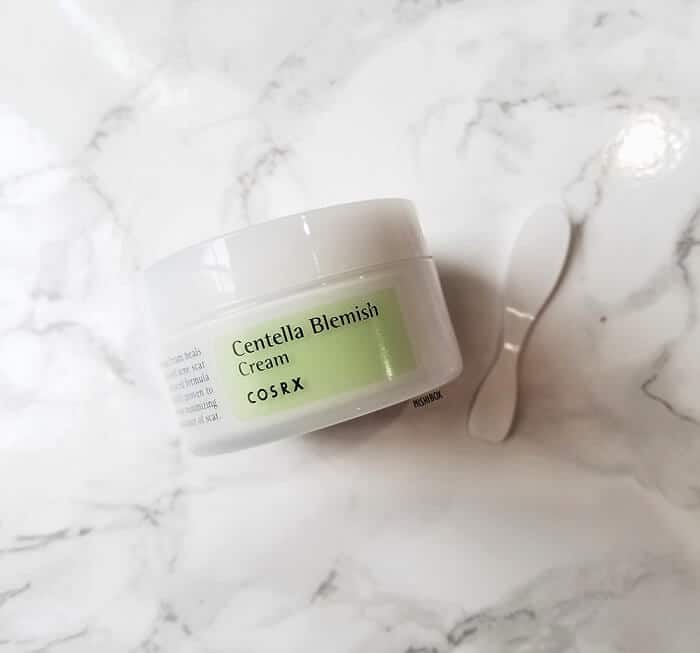
Now moving on to combination skin. Combination skin isn’t dry and isn’t oily, but it is a little bit of both right there on your t-zone. First, you have to make sure that your skin isn’t dehydrated.
A lot of combination skin is the result of dehydrated skin which means you’re just not moisturizing enough. So everything that works for oily skin, you can also use for combination skin.
Click here to see it on Amazon.
The CeraVe Moisturizing Lotion works great for basically all skin types. It has hyaluronic acid as well as ceramides which help lock in moisture to your skin. It’s not greasy, not too thick, and is fast absorbing as well. It’s not for dry skin because it’s not rich enough.
One of my favorite tried-and-true moisturizers has been the Aveeno Positively Radiant Daily Moisturizing Lotion which is really good for dry skin.
Click here to see it on Amazon.
Then there’s the La Roche-Posay Daily Moisturizing Cream which you can stick to if you have combination skin.
Click here to see it on Amazon.
Avoid anything too thick because it might cause breakouts. If you’re feeling experimental, you can create a cocktail moisturizing method on your face.
To do this cocktailing method, you can use two creams. For the gel part, you can use the Ginzing Gel Moisturizer I mentioned earlier (for oily skin), which you can apply in the T-zone area.
Click here to see it on Amazon.
As we all know, the areas that have the most oil are the cheeks, the nose, and the forehead.
Then along the sides, you can use the COSRX Centella Blemish Cream, which is probably one of the best creams around.
Click here to see it on Amazon.
It’s a little bit heavy but has a star ingredient, the Centella asiatica, which is high in antioxidants. It calms and reduces acne, scarring and spots, and any sort of redness or pigmentation. If you have problematic skin, acne-prone, oily, and even dry skin, you can use this because it’s also nourishing.
Best Face Moisturizer for Dry, Sensitive Skin
If you react to products easily or have itchy skin that is sometimes burning and painful when it comes to certain climates, then you most likely have sensitive skin.
You need to look for moisturizers that are very simple with minimal ingredients, no fragrances, no AHAs – just plain moisturizing components.
You can find them in the Cetaphil Sensitive Moisturizer as well as the La Roche-Posay Cream (I mentioned earlier for combination skin) and the Dermalogica Calm Water Gel.
Click here to see it on Amazon.
I think the best face moisturizer for dry, sensitive skin is the La Roche-Posay Cream.
Click here to see it on Amazon.
Click here to see it on Amazon.
Dry-skinned people don’t have as much oil production in the pores and don’t have much sebum. It’s mostly genetics, and sometimes it’s the hormones.
People with dry skin need a little bit more TLC because they don’t have the natural oils to help protect their skin.
Best Moisturizer for Normal Skin
If you fall into the category of normal skin, you’re blessed. If you’re not terribly oily and not terribly dry but are breaking out, maybe it’s because the moisturizer you are using is too rich. You can try a lighter moisturizer that’s not as thick.
You can also check the ingredients in your current moisturizer that you’re reacting to. For girls with normal skin looking for a great moisturizer, you can try Kiehl’s Ultra Facial Moisturizer.
Click here to see it on Amazon.
If you’re wondering if it’s okay to use different moisturizers on different days or alternate the different types of moisturizers that you have, you definitely can. You just have to get the feel of what your skin needs on specific days, depending on the weather, temperature, and climate.
Generally, you can stick to lightweight moisturizers in the summer since you’re already producing oil and sweat. You don’t want the moisturizer to trap the bacteria in your skin.
During winter, a lot of moisture is being evaporated by just being outside with the harsh cold winds. Heaters can also suck all the moisture out of your skin.
If you feel that your face is feeling a little more congested, make sure you use a moisturizer that has salicylic acid, which is also beta-hydroxy acid (BHA), and also alpha hydroxy acid (AHA), to help shed the dead skin.
Conclusion – The Best Face Moisturizer for Dry, Sensitive Skin
In summary, the best face moisturizer for dry, sensitive skin; or oily skin is:
- Dry, Sensitive Skin: CeraVe Moisturizing Lotion – Click here to see it on Amazon – Our #1 Top Pick!
- Oily Skin: Ole Henriksen Balancing Moisturizer – Click here to see it on Amazon
Now you know why it is so important to moisturize. Just learn how to read your skin and know how it’s feeling on that particular day so that you can pick and choose the right products to use.








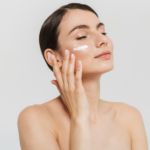
![Neutral Skin Tone Defined [and Best Colors for Neutral Skin] neutral skin tone](https://skincaregeeks.com/wp-content/uploads/2021/05/neutral-skin-tone-150x150.png)
